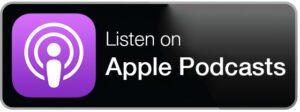Welcome to Lean Leadership for Ops Managers, the podcast for leaders in Ops Management who want to spark improvement, foster engagement, and boost problem solving – AND still get their day job done. Here’s your host, Leadership Trainer, Lean Enthusiast, and Spy Thriller Junkie, Jamie V. Parker.
Hey there Ops Leaders. I’d like to send a special thank you to everyone who has subscribed and has given us a rating. Because this show is new and we’d like to be able to be found by other Ops Managers, please head on over to wherever you listen to podcasts and leave us a rating. Now we’re continuing the conversation from episode five, talking about recognition and effective reinforcing feedback but I’m taking a little different spin on it this time.
Today I want to share a time when I was trying to get better at recognition, what happened, what I learned, and how we can all apply that lesson to better lead our teams. Remember in episode two, I introduced the Transformation Trinity – beliefs, behaviors, systems. And when these three are in alignment, then change and transformation is easier. When there’s a disconnect though, when something’s out of whack, then change and transformation actually become more difficult. So we’re talking today about recognition and giving reinforcing feedback. In episode five, we dug into the behavior circle of the topic. What mistakes are we making in the how we give recognition today? And how can we develop the skill, the behavior of giving effective reinforcing feedback? If you missed it, be sure to check it out to learn the four-part formula.
Now in this episode, let’s dive into the beliefs circle of recognition. Okay, let’s rewind a bit back to my hard and heavy command and control days. One of the things that I really sucked at was giving recognition. I mean, it was bad. It showed up on every single team member engagement survey or manager effectiveness survey or exit interviews or HR focus group discussions, essentially, anywhere the feedback could be given, it was. And my team told me to my face too, and they said, “You’re too hard on us. You always correct what we’re doing wrong but you never even see the good stuff we do and how hard we work day in and day out. Well, as a high C high D, as a perfectionist who likes to win, that didn’t work for me. I mean, I could tell you some cleaned-up version where I would say, “Yeah, and I took that feedback to heart and I wanted to be a better leader.” But the reality is, I didn’t want to be in fourth quartile particularly on something like manager effectiveness scores, which were a reflection on me specifically and I don’t want to be at the bottom of that. I got to raise my score there. So I had to fix that and that meant I had to learn how to give recognition and recognize the good things.
So I went to work. First I tried an Outlook calendar, right? I’m going to make an appointment. Every day I’m going to make an appointment and that way I can go and either pick up the phone or go out to the floor and give recognition. Yeah, it worked for a couple weeks or so. I would get up and either make those phone calls or go out to the floor or stop what I was doing when I got the little appointment reminder. But then I was like, “You know what? This just doesn’t work for me because my schedule is too flexible. I don’t have the same schedule all the time. I can’t just guarantee that I’m going to be in a place to be able to do this. I’ve got all these meetings and other people can put meetings on my calendar. I don’t control my calendar enough for this to work for me.”
So then I tried a list at the door. And so I made this list right at kind of the inside of my office door of every person on my team, and I would hashmark every time I would give recognition or share appreciation to them. And I thought, “Okay, this will help me because every single time I walk out of my office, I’m going to see it. I can also see it from my office desk”, like from where I was sitting at the time. And I used it for about a week and I was like, “No, this doesn’t work for me.” You see, I go out into the field, right? I mean, at the time, I had six stores and so I was only in my store a couple of days a week. The other days I was out visiting other stores. I’m not in my office; this doesn’t work for me.
And then I tried a gratitude practice. I said, “Okay. Every morning I’m going to get up and I’m going to start my day by writing a gratitude statement of three people at work I’m grateful for and why. That way I can get myself into the right mindset. I can set an intention that way and really start the day off positive and be really intentional about it.” Yeah, I think my gratitude practice lasted about five or six days. I was like, “Ah, I’m too busy. I don’t have time for this. There’s always something coming up in the morning. This just isn’t working for me.”
So I went to HR, I went to Maggie, my HR partner, I said, “Listen, nothing is working, I need your help. I want to get better at this.” And she said, “Jamie, I’ve got the exact thing for you. Have you heard of the penny trick?” I’m like, “No, what’s the penny trick?” She said, “Okay, here’s what you do. You take 10 pennies and you put them in your right pocket. And every day as you give recognition or share appreciation, then you take one penny out of your right pocket and you move it to your left pocket. Your goal is in up with all 10 but at the end of the day, you just do a quick count how many did you have in your left pocket. And this will be great for you because it doesn’t matter if you’re in your office or if you’re somewhere else, you’re going to have a constant reminder on your physical self of those pennies in your pocket. You’re going to always feel them. Every time you reach in to grab your phone or to grab a pen, you’re going to feel those pennies in there, and it’s going to be your reminder. And it lasted, I don’t know, two, three weeks or so, and then it didn’t work anymore. You see those pennies were still in my pocket. I still put those 10 pennies in my right pocket every single day for months. I just didn’t move any of them. They weren’t a reminder, they weren’t triggering a behavior.
Here’s the thing that I didn’t know then, but I learned and realized later on. The problem wasn’t the system or the tool. The problem was me. You see, at the time, I genuinely believed that people don’t deserve to be recognized for just doing their jobs. That’s what your paycheck is for, come on! What’s the deal with all this entitlement business? Employment is a contract. You do the job and you get paid. You don’t get thanks for that. You get thanks when you go above and beyond, not for doing your job. And here’s the thing, it was a really deep-seated belief. So here I was trying to use systems and tools to change my behavior but I didn’t actually believe I needed to change my behavior. I mean, I thought, “Yeah, I need to do some things so that people feel more recognized so that they’ll give me better scores”, but I didn’t think they deserved it. And the biggest problem of all is that at the time, I didn’t really recognize it to be a problem. I just thought, “Gosh, HR sucks. That was a dumb idea. It didn’t work.” Yeah, I know, I was a total joy to work with back then let me tell you. As you’re practicing reinforcing feedback or really any new skill or behavior change, pay attention to what comes up. Pay attention to the voices in your head. Go looking for where there might be in a misalignment in how you think versus how you want to act.
Now, listen, when it comes to recognition and reinforcing feedback, yours might be different than mine. Maybe you’re all-in believing that people are good and they deserve to be recognized for the everyday effort they put in, and for the falling down and getting back up. That’s not your hang up at all. You’re great, you got that. But maybe you have a hang-up of, “You know, I just don’t have time.” Or maybe you’re stuck on the idea that, “If I give too much recognition, it’ll be watered down and not meaningful.” Or maybe you’re thinking, “Well, we have to get results. And I don’t want people to get confused thinking that as long as we try, it’s okay if we don’t deliver results.” How strongly do you believe that thought? Maybe it’s a deep-seated belief like I had that is stopping you in your tracks or maybe it’s not. Maybe it’s not something that’s deeply held, it’s just something that you think of every now and then and it’s causing some bumps in the road. And if we can find them and acknowledge them, then we can have a smoother ride.
This is how the penny trick example becomes important to us today. Whether it’s about reinforcing feedback or a different skill you’re learning, the key is to explore it. And for all of my listeners who lead teams of Operations Managers, or supervisors or team leads, think about how this applies when we’re trying to teach them how to lead people better or how to manage their work processes better or how to lead improvement. What are the implications for how you develop leaders? What are some of the thoughts that might be holding them back? And how do you engage them in exploring those thoughts and thinking not just about the system or tool, but also about the behavior, the skill and those beliefs?
Okay, let’s recap and then I’m going to show one next step. So today I shared a story about how I could try system after system after system to give more recognition but none of them worked. And what I later learned is that they didn’t work because I had a deep-seated belief that people didn’t deserve to be recognized for just doing their jobs. When I began to acknowledge and work on shifting my belief, then recognition became easier. So the application for us is that when we’re developing either our own capabilities or when we’re developing the capabilities of others, we need to pay attention to what’s happening in our heads and our hearts.
Your one next step for this week. Ready? Spend at least 15 minutes reflecting. Where are your beliefs or your values or your thoughts getting in your way? What are the beliefs or thoughts that aren’t best serving you or your team or your organization or your customers or your goals? And on the flip side, what are the beliefs or values or thoughts that are best serving you? What are the thoughts that you can rely on to help you make good choices, to do the right thing, and to show up as the leader you want to be? Susan, one of my friends and mentors, talks about high-quality thoughts, and low-quality thoughts and being more purposeful in choosing high-quality thoughts. Share what you learned through your reflection on the comment page of the podcast, which you can find at ProcessPlusResults.com/podcast, and this is episode six.
That’s it for today. I want to thank each of you that has subscribed or provided a rating. It’s especially helpful since it’s a new podcast and we want managers to be able to find us. I look forward to talking with you next week.
You’ve been listening to Lean Leadership for Ops Managers with me, your host, Jamie V. Parker. For more information about me and how we can work together, head on over to ProcessPlusResults.com. To help more leaders like you discover the podcast, give us a rating and review, and to make sure you never miss an episode, hit that subscribe button wherever you like to listen to your podcasts.












